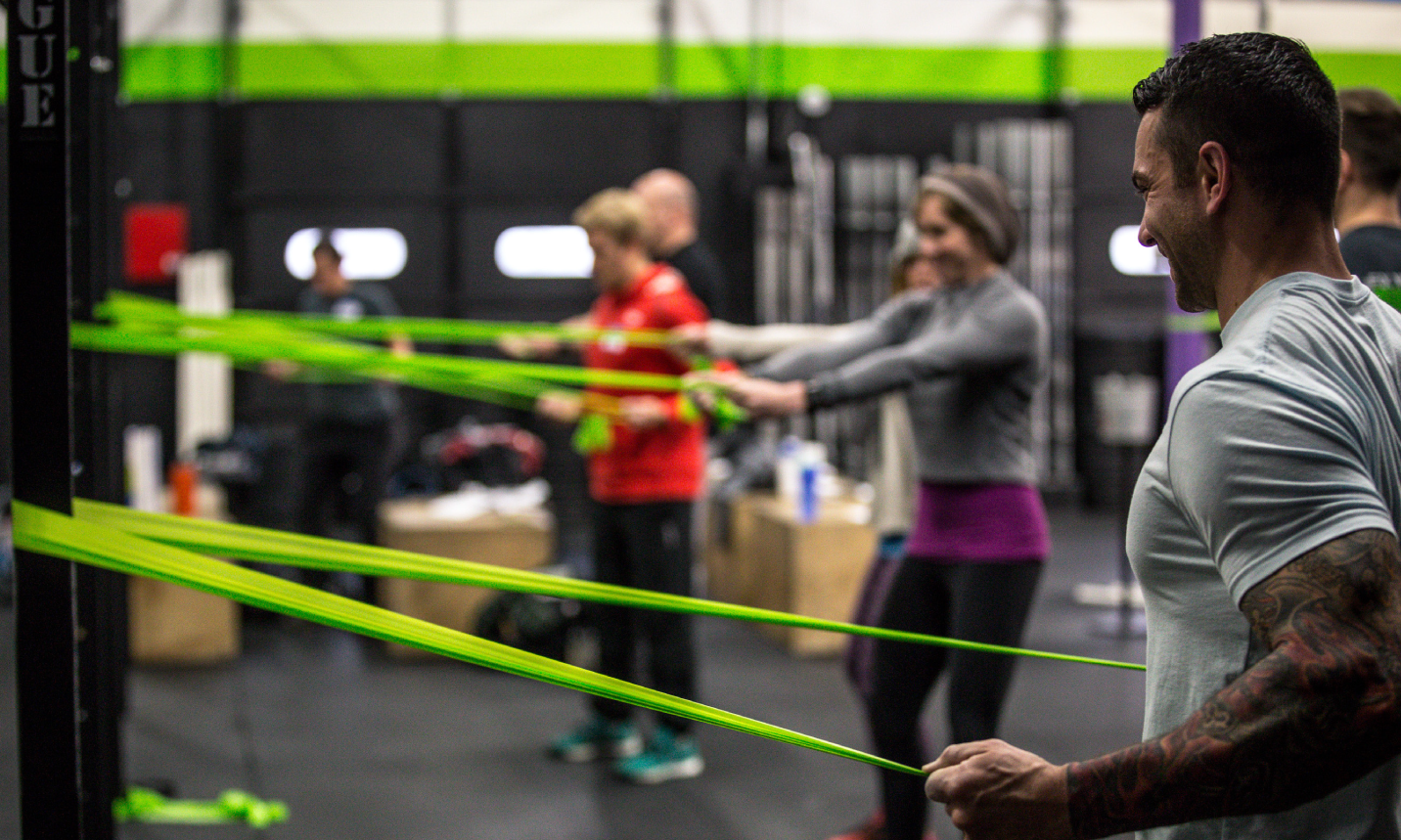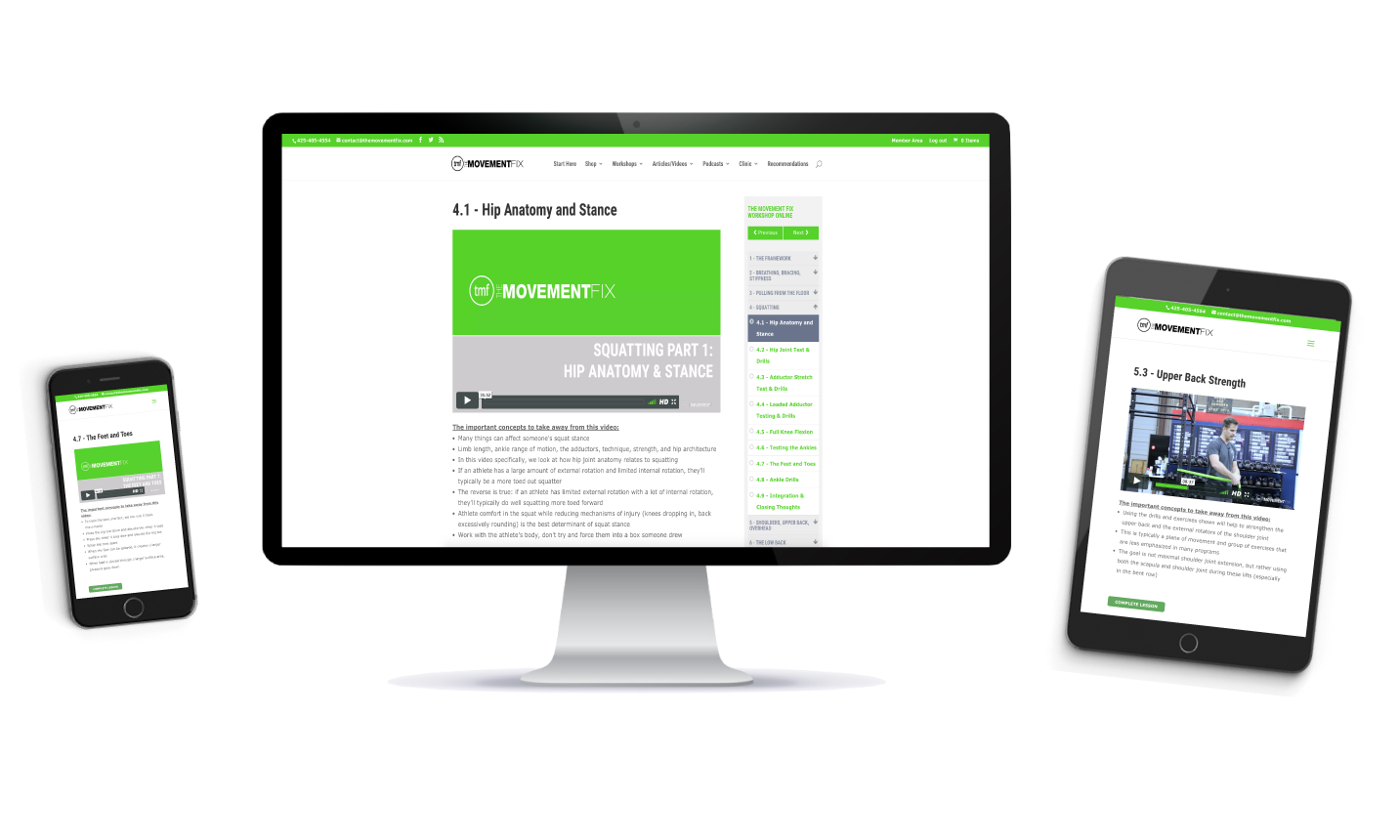Low Back Tightness During Deadlifts
*Updated 4/17/18
Check out The Movement Fix on Instagram @themovementfix
The Problem
When an athlete complains of low back tightness after a workout that has high rep deadlifts, kettlebell swings, or cleans/snatches (some sort of hip hinge movement) we have to figure out why that is happening.
There are many reasons this can happen, but one in particular I find quite frequently is when they round their low back during the last few inches of each rep (over and over and over again).
This can be a new lifter, but usually I see this complaint with this cause in people who have been lifting for a little while.
Need more hip and low back mobility? Start with Day 1 of our Hip/Low Back Mobility Program for free:
What to Look for
One thing I look for with that athlete is the size of their low back erector muscles. The motion that they have in their low back when they do this lifts essentially trains their low back through a range of motion, so they are strengthening it eccentrically and concentrically (vs isometrically when the low back moves less during those lifts).
You may find that that person has pretty hypertrophied (larger) low back muscles when this is the case. I don't necessarily think they have to have some sort of back injury that is causing the tightness, I think they fatigue out the muscles and they feel substantial metabolic pain (that is my speculation).
The approach I take to help someone who has this complaint of low back tightness during these lifts is to find a deadlift variant where the depth is limited.
Options
Instead of pulling off the ground, I would have them pull off blocks or do RDLs out of a rig.
If they're doing it off pull blocks or plates, I have them start at a height where their low back is essentially in neutral and during each rep they're moving primarily from the hips and not moving a lot through the low back.
If I choose to have them do RDLs, I have them start pretty high off the rack, take a few steps back, and then do the RDLs only to a depth where they can keep their back neutral. I don't want their low back curve reversing (since that is what I am trying to train out of them).
The rep counts even if they don't go really far down (since you'll get a training effect even if you don't touch the ground...those still train people even though it doesn't "count").
Additional Notes
I would have the athlete train with these modifications until they can substantially reduce that low back motion when pulling from the floor. That may take a few weeks of training or a few months of training, it depends on the person.
Next time you or someone you are working with has this complaint, take a look at the low back muscles and give these modifications a fair chance to take effect.
I am just about done with a full online course that covers modifying workouts for athletes when they have pain in all different types of lifts.
If you'd like to be notified when that becomes available (and get a big discount on it), please enter your e-mail below and I will let you know once it's ready.
What to Read Next
Top 5 Exercises to Work On Your Hip Extension
Top 5 Exercises to Work On Your Hip ExtensionIntroductionIn this article, we will cover: What hip extension is The difference between global extension and hip extension The muscles that control the pelvis and the muscles being stretched when the hip joint is more...
Why Your Lower Back Hurts When Sitting and What to Do About It
Why Your Lower Back Hurts When Sitting and What to Do About ItIntroductionThere are a handful of reasons why your lower back may hurt while sitting, so it’s impossible for an article on the internet such as this to explain to you exactly why your back hurts, but since...
Ultimate Guide to Hip Mobility
Ultimate Guide to Hip MobilityThis article is designed to be your go-to resource for hip mobility, both in understanding it theoretically and the practical implementation of doing the work or guiding others through the work. You can learn all you want about the human...
Commonly Misunderstood Words in Movement and Mobility
Commonly Misunderstood Words in Movement and Mobility In this post I will be sharing my thoughts on common words used in the movement and fitness world with a focus on how to better define them conceptually, and where applicable, mathematically. Each day...
Get all our latest articles sent directly to your inbox
Comments




Hi, Thanks for the great info. I was having a similar problem. I am 6"3 and was told it was more so due to my height and having legs that were to long. I was recommended to move away from conventional deadlifts and do sumo deadlifts. What are your thoughts on this?
Hey Creagh,
I think sumo deads can be a great option given certain body proportions!
- Ryan